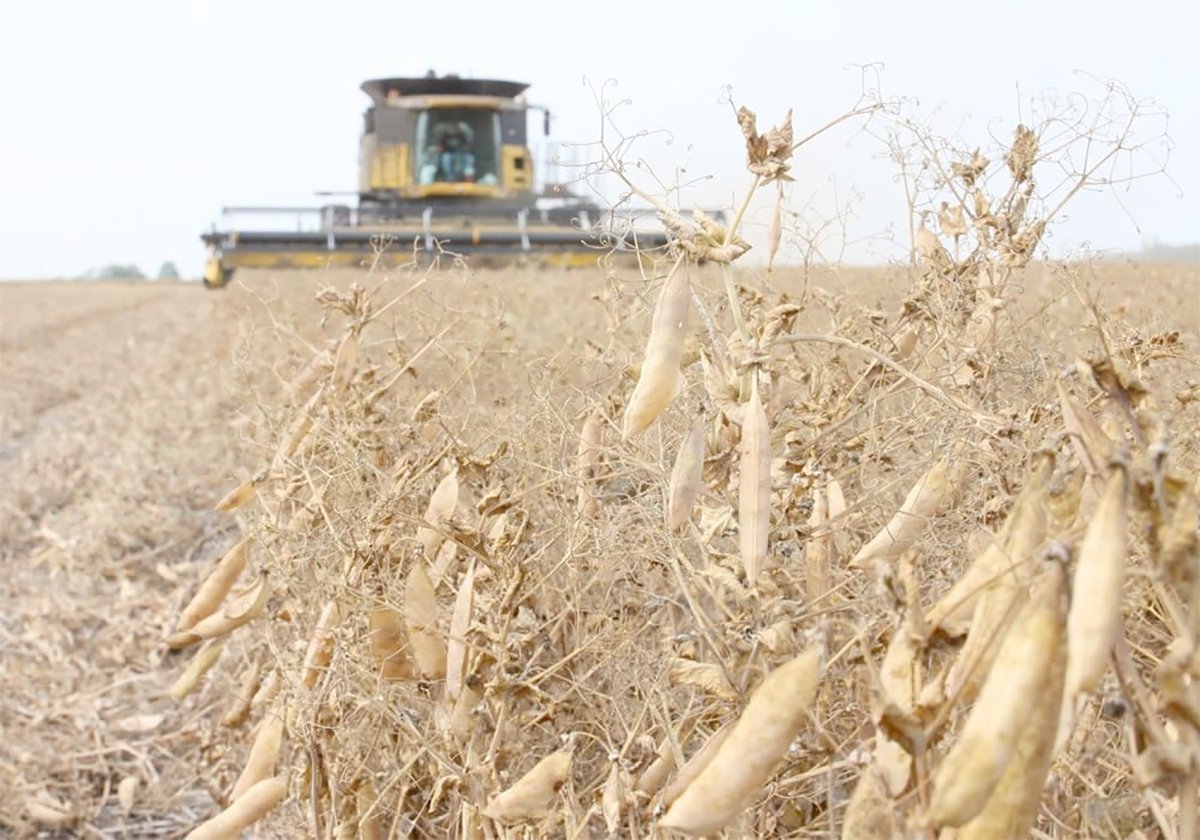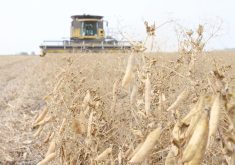From his vantage point at the Saskatchewan Legislature, the cabinet minister responsible for Saskatchewan Power Corporation increasingly sees rural electricity delivery as a question of cost and subsidy.
More precisely, it is a question of too much cost and too much subsidy.
“SaskPower must change to become competitive,” said Eldon Lautermilch. “Our customers must pay rates closer to the cost of production. Part of the reason SaskPower was created was to deliver power to rural Saskatchewan at a reasonable cost. We may have to rethink what we mean by ‘reasonable’ in the future.”
Read Also

Chinese, Indian tariffs take toll on pea prices
The disruption of pea exports from Canada’s largest customers will likely result in slow pea exports for the remainder of the crop year.
To farmers like Tim Weins and Brian Braumberger, talk like that means one thing – higher costs to power their operations.
It is not welcome news.
Weins, of O and T Poultry Farm near Regina, is a huge electricity consumer. Between his poultry and egg operations and a feed mill, he spends $5,000 each month in power bills.
“A 15 percent increase in power rates means $9,000 (out of) my pocket. Better in my pocket than in someone else’s,” he said. “I feel we are paying enough for our electricity.”
Braumberger, a mixed farmer from Lipton, Sask., said he may have to reconsider every aspect of power usage on his operation if rates continue to climb.
When he had a choice, Braumberger opted to power his farm with electricity rather than natural gas. It costs him $1,400 every three months.
“I think it’s plenty now. If we have to pay the full shot I’ll be making some major changes in the way we do things.”
Braumberger’s farming operations include 400 hogs, 70 head of beef cattle and an 1,800 acre grain farm.
“We even heat the house with electricity…, grain bin aeration, heating elements in the water bowls…, electric heat in the hog barn, heat lamps and ventilation. It’s all electric…. If prices even rise 30 or 40 percent, it would really cut into profits,” he said.
Braumberger said he would have to switch to more efficient equipment but that too will cost money and take profits from his family farm.
These are the pressing questions facing energy-dependent Saskatchewan farmers these days as their power system prepares for big changes.
Experts say there are few answers but there is one widely accepted assumption – rural #energy costs are going to rise.
For years, they say, commercial and industrial rates have been kept artificially high to keep rural costs down.
Making it pay to stay
Now, with international and internal trade deals, the prospect of fewer restrictions on power flowing between provinces and across the Canada/U.S. border raises the spectre of tougher competition. It is forcing SaskPower to consider ways to lower power rates for its largest industrial consumers in order to hold onto them.
“Cross subsidies must be eliminated as part of rate rationalization …” wrote the Washington International Energy Group in a report last year to Saskatchewan’s electricity crown corporation.
The report outlined several nightmare scenarios for SaskPower including “large customers shifting operations to other provinces or states, shutting down altogether or resorting to lower-cost options.
“SaskPower’s debt level and its subsidies to rural customers, in the context of relatively flat electricity demand growth, create a significant vulnerability that others will exploit.”
Already, SaskPower’s transmission system is capable of allowing industrial users to import power from Manitoba, Alberta and North Dakota.
And the Saskatchewan utility, which is charging the highest rates in North America, is surrounded by competitors with distinct advantages.
To the west, Alberta is in the midst of a power deregulation which could lower prices. To the south, American companies have already been deregulated. To the east, Manitoba Hydro charges some of the lowest power rates in North America.
Contributing to SaskPower’s woes is the company’s $2.2 billion debt, its dependency on coal-generated plants for 70 percent of its power and a reliance on industrial customers for the bulk of its revenues.
All this could leave Saskatchewan farmers facing significantly higher energy costs just as they are faced with more competitive markets and a loss of transportation subsidies.
But some energy specialists say technology could come to the rescue of isolated power consumers.
Kelly Kissock, an Ohio-based professor and researcher at the University of Dayton, predicts small, low-cost power generators that can be adapted to towns or farms will replace the existing high-cost grid as the main means of supplying electricity to rural and isolated areas.
Hydrogen-supplied fuel cells, wind, biomass and natural gas conversion all are potential sources of small-scale local power generation.
Ann Coxworth of the Saskatchewan Environmental Society says a hurdle for the new power sources is that SaskPower is not yet being penalized for burning polluting coal. “As long as we don’t penalize producers of greenhouse gases, new technologies can’t fully compete with coal burners.”
Other alternate energy enthusiasts are more optimistic.
“Saskatchewan is paying the highest electricity costs in North America,” said Richard Kline of the Calgary-based Mercury Electricity Corp. “Given a chance to compete, we will find a way to deliver power at competitive rates. If we can cut the cost of power by locating generation closer to the user, we can further erode the control of the large utilities…. There are many ways to compete in the market.”
A look into new possibilities
Kline is enthusiastic about new micro-turbines that can be powered by waste natural gas or unrefined natural gas.
Others share the enthusiasm.
John Keating, president of Canadian Hydro Developers Inc. in Calgary, feels there are as many as 15 untapped small hydro sites in Saskatchewan and is interested in the market.
Keating operates four small hydro generation stations in Alberta and British Columbia. Like natural gas, he said, electricity could be exported from the Prairies.
“We can add value to our natural gas right here at home. We are beginning to do it in agriculture and power is no different. Bottlenecks in the pipeline system mean that natural gas costs more to ship and has limits. If we convert it to electricity…we can wheel power to the same customers who now use it to generate their own.”
But will any of these potential new sources be an answer for farmers now facing the prospect of higher power bills?
Tim Weins at O and T Poultry Farm has yet to be convinced.
As a major farm power consumer, he hopes deregulation will bring his power costs down in the end. So far, he said, there simply isn’t enough information available to make that prediction.
It remains part of the uncertain future farmers like him face.














